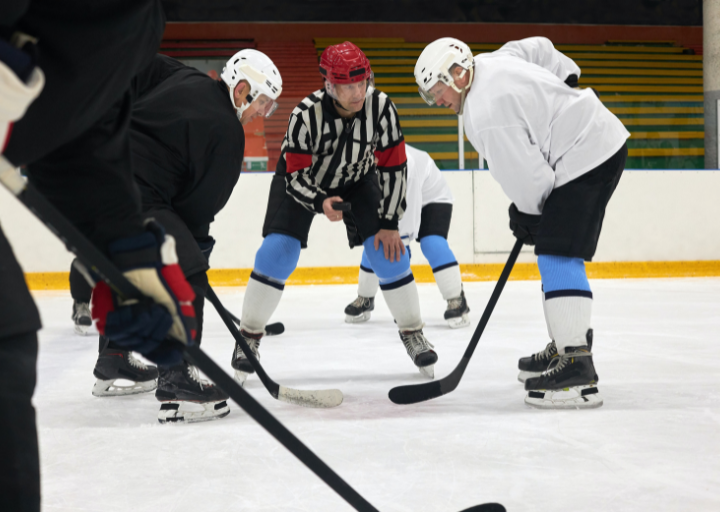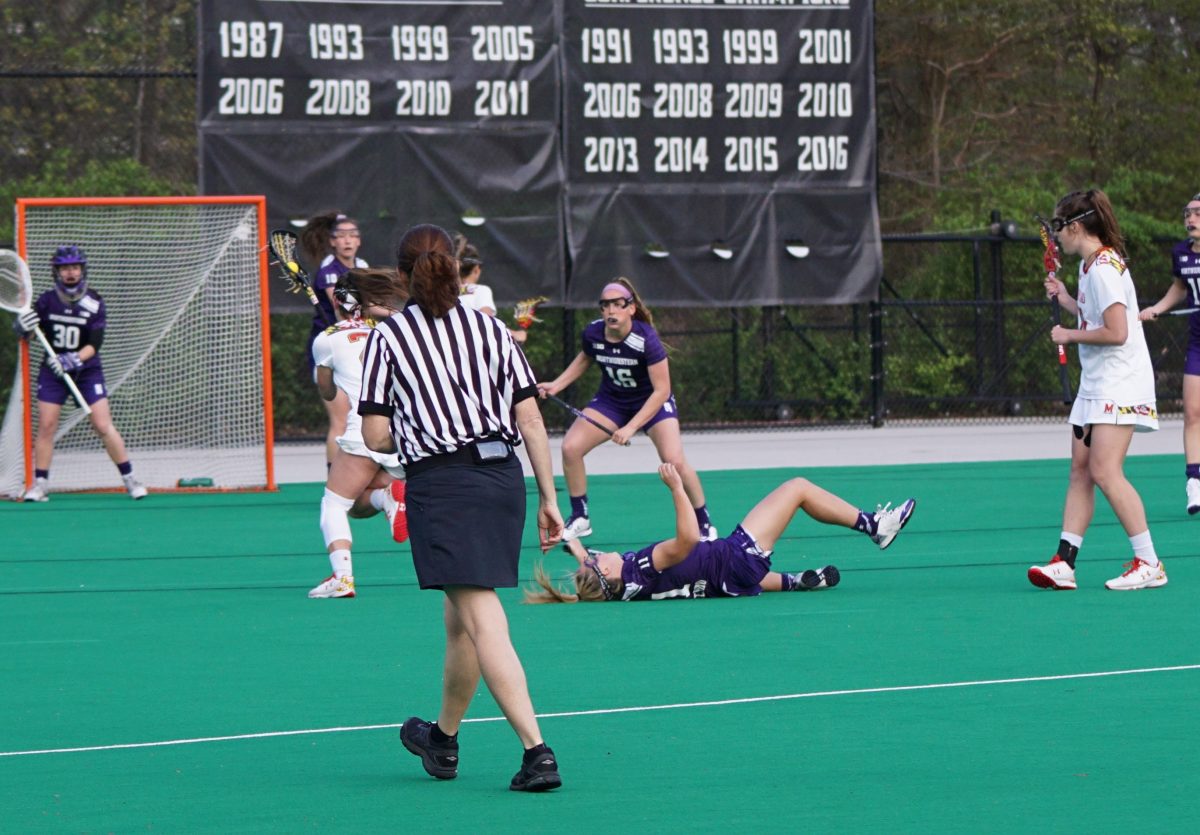Hockey is a physically demanding sport that often leads to various injuries, with medial collateral ligament (MCL) injuries being among the most common. While these injuries are generally well-managed, it is essential to understand the long-term outcomes and potential complications associated with MCL injuries in hockey players. This comprehensive guide will explore the topic, including the anatomy of the MCL, common causes of MCL injuries, their acute management, and, most importantly, the potential long-term consequences and complications.
I. Anatomy of the Medial Collateral Ligament (MCL)
The MCL is a crucial stabilizing structure located on the inner aspect of the knee. Understanding its anatomy is fundamental in comprehending the potential long-term outcomes and complications of MCL injuries in hockey players.
A. Structure of the MCL
The MCL is a thick band of tissue that runs along the inner side of the knee joint. It consists of three layers: superficial, deep, and posterior oblique. These layers work together to provide stability to the knee and resist forces that could push the joint sideways.
B. Function of the MCL
The primary function of the MCL is to prevent excessive valgus (inward) stress on the knee joint. In hockey, where rapid direction changes and physical contact are frequent, the MCL plays a crucial role in maintaining knee joint stability.
II. Common Causes of MCL Injuries in Hockey
Understanding how MCL injuries occur in hockey is essential for both prevention and managing long-term complications.
A. Direct Trauma
- Body Checks: One of the most common causes of MCL injuries in hockey is a body check, where players collide with each other. These impacts can transmit significant force to the knee, leading to MCL sprains or tears.
- Puck Impact: High-speed pucks can also hit players’ knees, causing MCL injuries. Goalies, in particular, are at risk due to their frequent exposure to fast-moving pucks.
B. Non-Contact Mechanisms
- Sudden Stops or Turns: Hockey players often make quick, sharp movements to change direction. These abrupt shifts in motion can place excessive stress on the MCL, leading to injuries, even without direct contact with another player.
- Overuse: Chronic overuse and repetitive stress can weaken the MCL over time, making it more susceptible to injury, especially in athletes who engage in rigorous training and competition schedules.
III. Acute Management of MCL Injuries
Prompt and appropriate initial management is crucial for minimizing long-term complications associated with MCL injuries.
A. Grading MCL Injuries
- Grade I: Mild sprains involving minimal ligament stretching and no significant tearing. Typically, these injuries require rest, ice, compression, and elevation (RICE) and may not result in long-term complications.
- Grade II: Moderate injuries with partial tearing of the MCL. They often require bracing, physical therapy, and more extended recovery periods.
- Grade III: Severe injuries involving complete rupture of the MCL. These may require surgical intervention, followed by an extensive rehabilitation process.
B. Rehabilitation
- Range of Motion Exercises: Early mobilization is essential to prevent joint stiffness. Physical therapists help players regain their range of motion gradually.
- Strengthening Exercises: Strengthening the muscles around the knee, especially the quadriceps and hamstrings, is crucial to enhance joint stability.
- Bracing: Depending on the severity, players may need to wear a brace for additional support during recovery.
IV. Long-term Outcomes and Complications of MCL Injuries
MCL injuries can have lasting effects on hockey players, both on and off the ice. Understanding these long-term outcomes and potential complications is vital for athletes, coaches, and medical professionals.
A. Recurrent Instability
Players who sustain severe MCL injuries may experience recurrent instability in their knee joint, even after surgical intervention. This instability can affect their performance and increase the risk of further injuries.
B. Cartilage Damage
MCL injuries, especially when combined with other ligament injuries or fractures, can lead to cartilage damage within the knee joint. Over time, this can result in osteoarthritis, a degenerative joint condition that causes pain and reduced mobility.
C. Reduced Performance
Players who have experienced MCL injuries may not regain their pre-injury performance level. The fear of re-injury and residual pain can impact their agility, speed, and confidence on the ice.
D. Psychological Impact
Injuries, including MCL injuries, can have a profound psychological impact on hockey players. The frustration of being sidelined, fear of re-injury, and the challenges of rehabilitation can lead to anxiety and depression.
E. Chronic Pain
Some individuals may experience chronic pain in the knee, even after apparent recovery. This pain can be due to residual damage or changes in joint mechanics.
V. Preventive Measures
Prevention is always preferable to treatment when it comes to MCL injuries in hockey. Coaches, players, and medical staff can take several measures to reduce the risk of these injuries.
A. Proper Training
Ensure players receive proper training in techniques and skills that minimize the risk of MCL injuries. This includes teaching them how to absorb impact and make controlled movements.
B. Protective Gear
Players should wear appropriate protective gear, including knee pads and braces, to reduce the risk of MCL injuries, especially during contact plays.
C. Strength and Conditioning
Regular strength and conditioning programs that focus on knee stability and overall joint health can help players build resilience against MCL injuries.
VI. Return to Play and Monitoring
Returning to play after an MCL injury is a critical phase in a player’s recovery journey. It should be approached cautiously to ensure that the player is fully healed and ready to resume competitive hockey.
A. Medical Clearance
Before returning to play, players should obtain medical clearance from their healthcare provider. This clearance should confirm that the MCL has healed sufficiently and that the player has regained the necessary strength and range of motion.
B. Gradual Progression
Players should not rush back into competitive play. Instead, they should follow a gradual progression, starting with non-contact drills and building up to full contact. This stepwise approach reduces the risk of re-injury.
C. Monitoring
Coaches and medical staff should closely monitor players during their return to play. Any signs of discomfort, decreased performance, or recurrent symptoms should be addressed promptly to prevent further complications.
VII. Future Research and Advancements
The field of sports medicine is continually evolving, and ongoing research is essential to better understand MCL injuries and improve treatment outcomes. Future advancements may include:
A. Biomechanical Analysis
More in-depth biomechanical studies can help identify specific movement patterns and loads that predispose hockey players to MCL injuries. This information can inform injury prevention strategies.
B. Regenerative Therapies
Research into regenerative therapies, such as platelet-rich plasma (PRP) and stem cell treatments, may offer new avenues for promoting faster and more effective healing of MCL injuries.
C. Personalized Rehabilitation
Advancements in rehabilitation techniques may lead to personalized rehabilitation plans tailored to individual players, optimizing their recovery and reducing the risk of complications.
Conclusion
MCL injuries are a common occurrence in hockey, and understanding their long-term outcomes and complications is crucial for all stakeholders involved. While these injuries can have lasting effects on players’ performance and well-being, with proper acute management, preventive measures, and a well-structured return-to-play protocol, players can minimize the impact of MCL injuries and safely return to the sport they are passionate about.
It is important to remember that each MCL injury is unique, and the long-term consequences can vary widely. Therefore, a personalized approach to treatment, rehabilitation, and preventive strategies is essential to ensure the best possible outcomes for hockey players.
Frequently Asked Questions (FAQs)
Q1. Can MCL injuries lead to other knee ligament injuries, such as ACL tears?
A1. While MCL injuries primarily involve the medial collateral ligament, they can sometimes occur in conjunction with other knee ligament injuries, such as ACL tears. This combination of injuries can complicate treatment and rehabilitation.
Q2. Are there any advancements in protective gear to reduce the risk of MCL injuries?
A2. Protective gear continues to evolve, with innovations in knee pads and braces designed to provide better support and reduce the risk of MCL injuries. Players should stay updated on the latest gear options.
Q3. Are there any dietary or nutritional strategies that can aid in MCL injury recovery?
A3. A balanced diet rich in nutrients that support tissue healing, such as protein, vitamins, and minerals, can benefit the recovery process. Players should consult with a sports nutritionist for personalized guidance.
Q4. Can MCL injuries in youth hockey players have different long-term outcomes?
A4. The long-term outcomes of MCL injuries in youth hockey players may differ due to factors such as growth plate involvement and the potential for continued growth. Close monitoring and specialized care are essential for this population.
Q5. How can coaches and teammates support players recovering from MCL injuries?
A5. Coaches and teammates can offer emotional support, maintain open communication, and encourage players to adhere to their rehabilitation programs. Creating a supportive team environment can aid in a player’s recovery journey.
In summary, MCL injuries in hockey are a multifaceted issue that requires a comprehensive approach involving prevention, acute management, rehabilitation, and ongoing monitoring. With proper care and attention to the long-term outcomes and potential complications, hockey players can navigate their recovery successfully and continue to enjoy their passion for the game.













